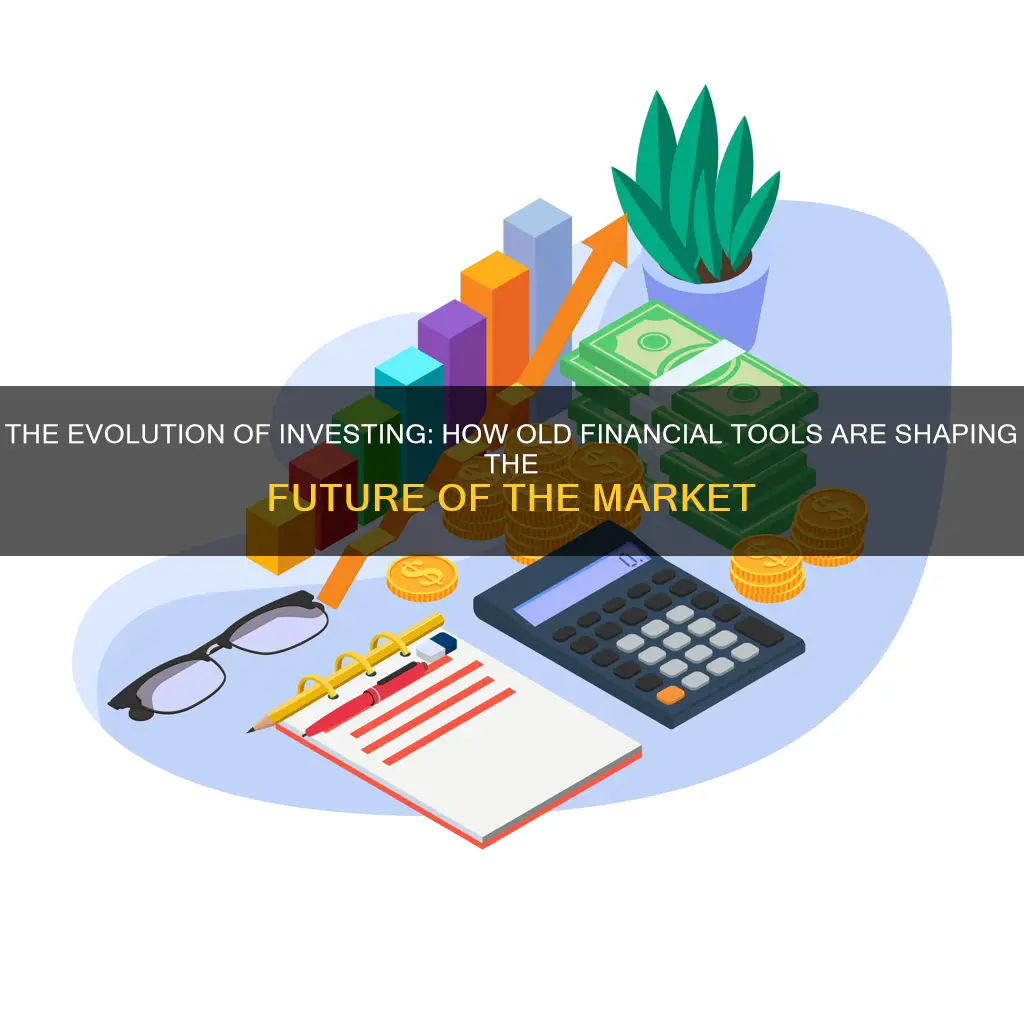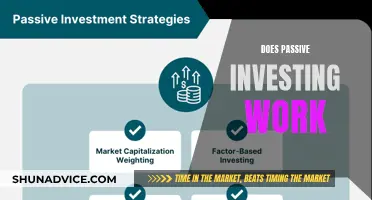
Special Purpose Acquisition Companies (SPACs) are an old financial tool that has recently become the hottest way to raise capital, especially in the tech sector. SPACs are essentially a backdoor method for start-ups to go public without undergoing a traditional IPO, providing more flexibility and less scrutiny. With more than $30 billion raised in 2020 through 75 SPACs, this investment instrument is offering smaller and innovative companies a way to gain enough capital to establish themselves independently.
| Characteristics | Values |
|---|---|
| Name of the old financial tool | SPAC (Special Purpose Acquisition Companies) |
| Type of companies using SPACs | Start-ups and big-idea companies |
| SPACs vs IPOs | SPACs are a back door to taking a start-up public, an alternative to a traditional IPO |
| Advantages of SPACs | Less scrutiny, more speed, more flexibility, and more control for the core group of investors and executives |
| Disadvantages of SPACs | Possibilities for abuse, may miss out on the cachet that comes with an IPO |
What You'll Learn

SPACs are a back door to taking a start-up public
Special Purpose Acquisition Companies (SPACs) are a way for start-ups to raise capital and go public without a traditional initial public offering (IPO). SPACs are essentially shell companies with a war chest of cash and a single objective: to take a private company public. They are formed by sponsors with the sole purpose of raising capital from investors through an IPO. The sponsors source private companies to merge with, thereby taking them public via the back door.
SPACs have become an increasingly popular way for start-ups to raise capital, especially in the tech sector. In 2020, the number of SPACs on the market quadrupled from the year before, and this trend has continued into 2021. SPACs offer smaller, innovative companies a way to gain enough capital to remain independent and evade acquisition by bigger companies.
The process of creating a SPAC begins with a small team, often including a former CEO or industry expert, forming an LLC, or limited liability corporation, typically in Delaware. This team is known as the "sponsor". The sponsor then creates the SPAC and takes it public through an IPO. The SPAC management team must put up some money, known as "risk capital", to fund the SPAC until its eventual merger with a private company. In exchange for putting up this capital, the team receives 20% of the shares in the eventual public SPAC for a nominal amount.
Once the SPAC is public, the management team can begin hunting for deals. Most SPACs have about two years to find a private company to merge with, but due to high demand, they often find deals within a month or two. Once a deal is found, the SPAC management team will seek additional financing from institutional investors to make up the difference. The deal itself is known as a "reverse merger", as the private company is using the SPAC to take it public, rather than going through the traditional IPO process.
SPACs offer start-ups a faster and less scrutinised way to go public compared to a traditional IPO. They also provide more flexibility and choice, from picking board members to setting prices. However, it is important to note that SPAC firms have been found to carry more debt, be smaller, invest less, and have lower growth opportunities than firms that conduct a conventional IPO. As such, investors should be wary of participating in SPAC transactions.
Savvy Savings: Navigating the Tricky Triangle of Savings Rate, Investment and Retirement Allocation
You may want to see also

SPACs are an alternative to traditional IPOs
SPACs, or Special Purpose Acquisition Companies, are an alternative to traditional IPOs (Initial Public Offerings). They are a way for companies to "go public" without the costs and scrutiny associated with a traditional IPO. SPACs are often used by smaller, innovative companies as a means to gain enough capital to remain independent.
SPACs are formed with a "blank check" to acquire an unspecified company within two years. The target company becomes public through the merger, and all fees and costs are covered before the target company is involved. This is a key difference between SPACs and IPOs, as the target company going public via a SPAC merger avoids the fees associated with an IPO.
SPACs have several advantages over traditional IPOs. They are faster, with mergers usually taking 3-6 months compared to 12-18 months for an IPO. They also offer upfront price discovery, as the pricing is negotiated with the SPAC before the transaction closes, which is beneficial in a volatile market. SPAC sponsors may also raise additional capital to fuel growth for the combined company. Marketing costs are also lower, as SPAC mergers don't need to generate interest from investors with an extensive roadshow. Finally, SPAC sponsors often have operational expertise and can offer management expertise or take on a board role.
However, there are also some disadvantages to SPAC mergers. There is a risk of shareholding dilution, as SPAC sponsors usually own a 20% stake, and they can receive more shares when the stock price achieves a specified target. There may also be a capital shortfall if initial SPAC investors redeem their shares. The timeline for public company readiness is compressed, and the target company usually has to prepare financials and establish public company functions under a much shorter deadline. The financial diligence performed is also narrower in scope, which could lead to potential restatements or incorrectly valued businesses. Finally, there is a lack of underwriting and comfort letters, as a SPAC does not have an underwriter since it is already public.
Value Investing: A Rare Gem
You may want to see also

SPACs are a way to raise capital for smaller, innovative companies
Special Purpose Acquisition Companies (SPACs) have been around for a long time, but they have recently become the hottest way for smaller, innovative companies to raise capital. SPACs are essentially a back door to taking a startup public, providing an alternative to a traditional IPO.
SPACs are companies with no commercial operations formed to raise capital through an IPO to buy another company. They are commonly referred to as "blank check companies" because they are formed with the goal of acquiring an unspecified company within two years. The target company becomes public through the merger. SPACs have become popular because they offer a faster route to a public offering, with less scrutiny and more flexibility over valuations.
SPACs can be an attractive option for smaller companies, particularly in the tech sector, as they can add up to 20% to the sale price compared to a typical private equity deal. They also offer a faster IPO process under the guidance of an experienced partner, with less worry about broader market sentiment. For retail investors, SPACs present an opportunity to gain access to fast-growing companies that may otherwise be inaccessible.
The rise in SPACs has occurred alongside the boom in private equity and venture capital, with investors looking to cash in on the companies they have invested in over the past decade. The effects of the coronavirus pandemic also contributed to the increase in SPACs, as many companies chose to forego conventional IPOs due to market volatility and uncertainty.
Retirement Investments: Living Off Profits
You may want to see also

SPACs are a way to avoid scrutiny and move quickly
Special Purpose Acquisition Companies (SPACs) are shell companies with no operations that are formed by a group of investors called sponsors. SPACs are a way to avoid scrutiny and move quickly because they are subject to less SEC regulation compared to traditional IPOs. The review process for SPACs is more streamlined due to the absence of historical financial data, and SPACs can take advantage of the safe harbour rules for forward-looking statements under the Private Securities Litigation Reform Act of 1995 (PSLRA).
SPACs have become increasingly popular as they offer a faster way to take a company public. In 2020, there were 248 SPAC IPOs, nearly five times the number in 2019, and in the first four months of 2021, more than 300 SPACs valued at nearly $100 billion were listed in the US. This boom has caught the attention of the SEC, which has issued guidance and statements highlighting disclosure and accounting considerations for SPACs.
Despite their popularity, SPACs have come under increasing regulatory scrutiny and litigation challenges. There have been concerns around due diligence disclosures, forward-looking statements, and warrant accounting. The SEC has also raised potential issues regarding conflicts of interest, as the economic interests of SPAC sponsors may not align with those of SPAC investors.
To address these concerns and avoid scrutiny, SPACs should ensure they fully disclose all potential conflicts of interest at both the IPO and business combination stages. They should also consider incorporating a waiver of the corporate opportunity doctrine into their incorporation documents and structure their founders' shares to align with the interests of public shareholders.
The Workforce Investment Act: Unlocking Tuition Support for Career Seekers
You may want to see also

SPACs offer flexibility and negotiability to entrepreneurs
Special Purpose Acquisition Companies (SPACs) have been around for a long time but have recently become the hottest way for smaller, innovative and big-idea companies to raise capital, especially in the tech sector. SPACs offer an alternative to a traditional IPO, providing several benefits to entrepreneurs:
Flexibility and Negotiation
SPACs are essentially a back door to taking a startup public. They are formed with the sole purpose of merging with a privately held business to enable it to go public. The target company becomes public through the merger, and because the money is raised without a specific target in mind, SPACs are often called "blank check" companies.
Secondly, SPACs offer higher valuations and more certainty over pricing. Companies can negotiate stock prices with the SPAC sponsor as part of their merger agreement, locking in a stock price and protecting it from market volatility. This is in contrast to traditional IPOs, where there is a risk of underpricing, which can result in losses for the company.
Thirdly, SPACs provide greater transparency and less dilution. Entrepreneurs have more control over the terms of the deal, allowing them to set up the company for success after the transaction closes. They can also negotiate alternative conditions in the contract, such as allowing private investment in public equity or adding equity or debt.
Lastly, SPACs offer access to seasoned and competent managers. Leading private equity groups and skilled executive squads are backing these new-generation investment vehicles, providing higher standards in fundraising and potential returns on investments.
SPACs offer entrepreneurs flexibility and negotiability in various aspects of the deal-making process. They provide speed, higher valuations, transparency, and access to competent management teams. As a result, SPACs have become an attractive option for entrepreneurs seeking to raise capital, particularly in the tech sector.
Bezos' Shiba Inu Gamble: Will the Amazon Founder Take the Plunge?
You may want to see also
Frequently asked questions
SPAC stands for "special purpose acquisition companies". It is an alternative to a traditional IPO, where an acquisition fund with a "blank check" is formed to acquire an unspecified company within two years, making the target company public through a merger.
SPACs offer smaller, innovative, and big-idea companies a way to get enough capital to become independent businesses and avoid being acquired by bigger companies. They also allow companies to go public with less scrutiny and more speed compared to a traditional IPO.
Chamath Palihapitiya, Bill Ackman's Pershing Square Tontine Holdings, Paul Ryan, and Billy Beane are some notable people involved in SPACs.







